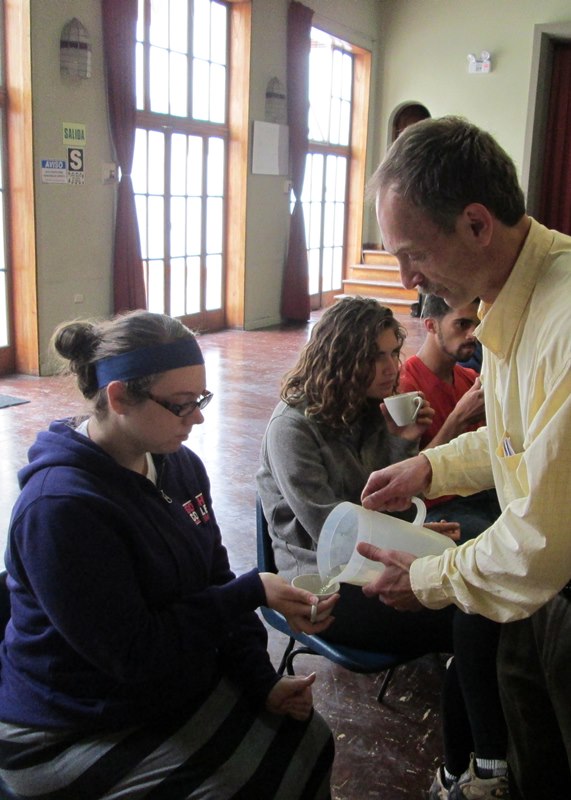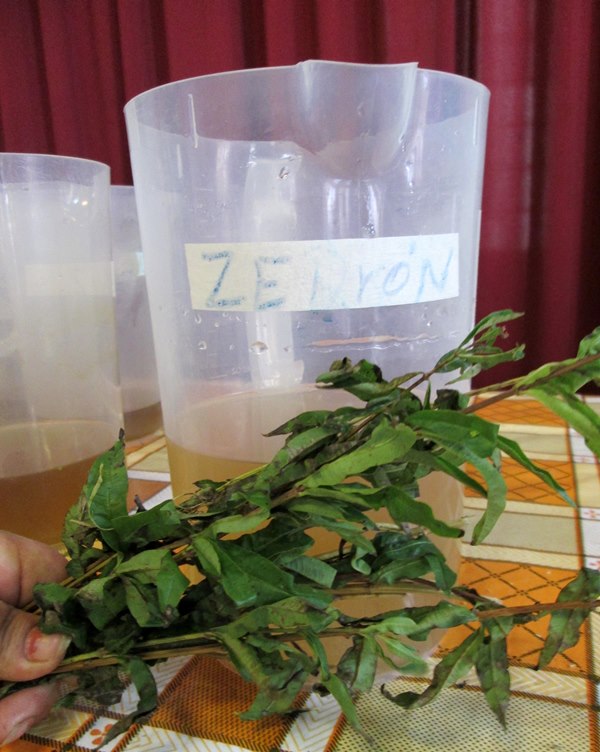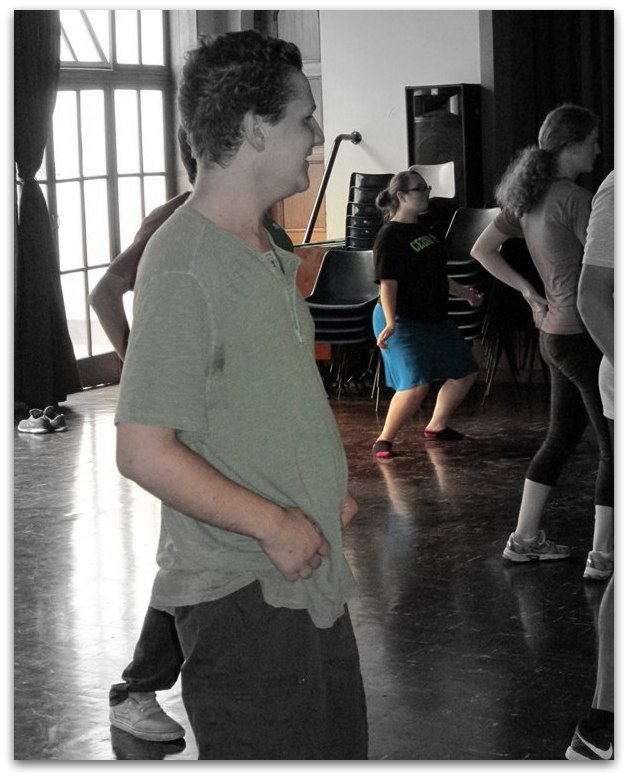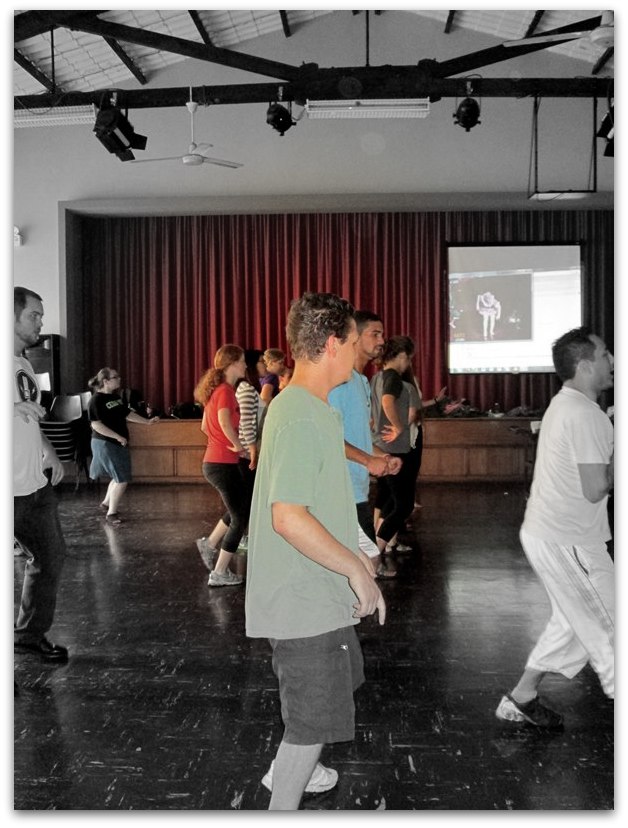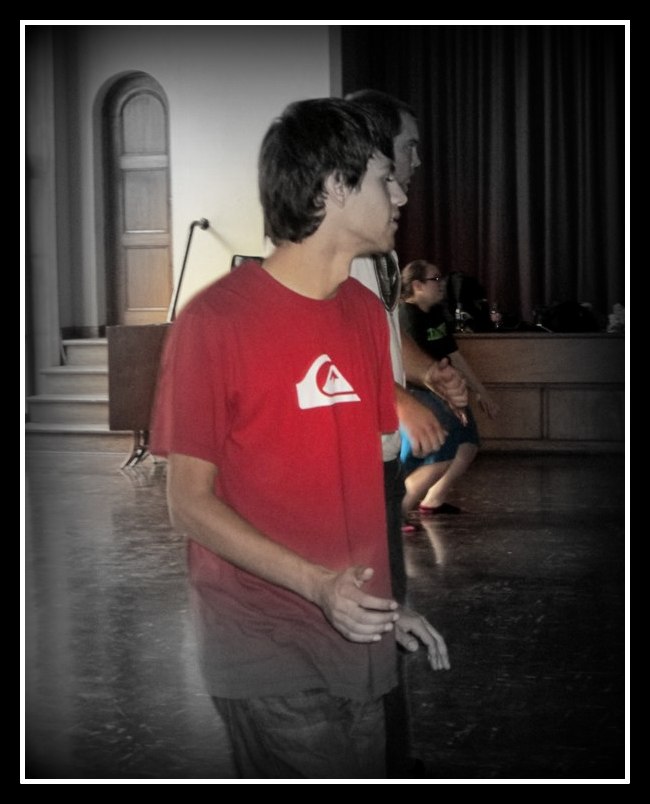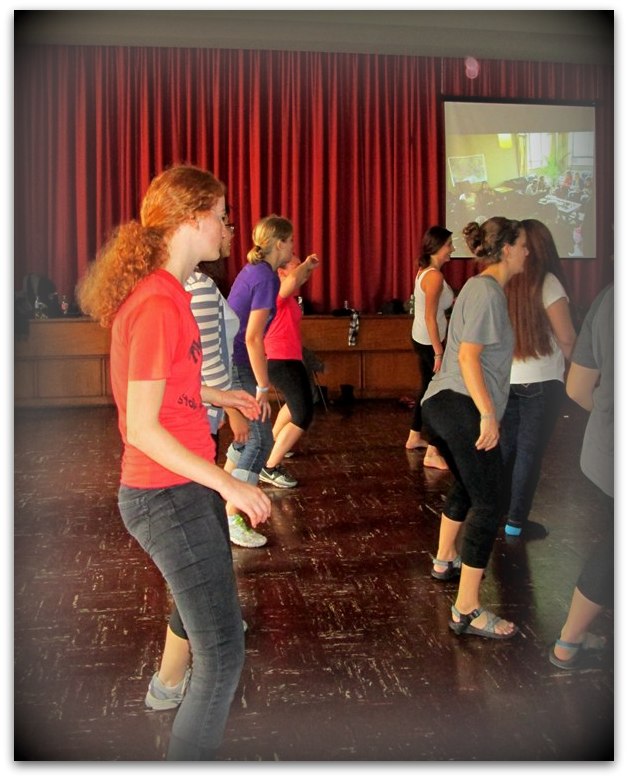Art of Tap, Teas and Seeds
During the first half of the SST semester in Peru, students participated in a series of interactive workshops related to dance, music, herbs and jewelry-making.

Alicia Taipe Tello, a longtime cook and cultural guide for Goshen College, served as the first presenter of the term, introducing students to an array of Andean herbs and their healing properties. Alicia, who as a child herself helped to care for her younger sister at home in the Andes, said she would make teas of chamomile and other herbs for the baby when there was no milk. “Growing up, we didn’t have a lot of money and my mother told us about the importance of herbs for staying well,” she said.
We tasted her brews of aloe (for sore throats), manzanilla (chamomile, to soothe the nerves), muña (a native mint, to calm the stomach), and a variety of other herbs such as anis (anise), hierba luisa (lemon grass), cedrón (lemon verbena) and uña de gato (cat’s claw).

She also showed us coca leaves, which Andean people chew as a mild stimulant, or drink in tea to relieve altitude sickness or stomach pain. A few students volunteered to touch themselves with ortiga (nettles), which is used to treat arthritis and other ailments, but also irritates the skin.
In the early years of the SST program in Peru, Goshen students would travel south of Lima to the Ballumbrosio home in El Carmen, in the coastal Chincha Province, to pay tribute to the late family patriarch, Amador, and to watch zapateo tap dancing and cajón percussion playing at their finest.

We followed the more recent approach, inviting a son, Camilo Ballumbrosio, an Afro-Peruvian percussionist known throughout Peru and among world music fans in Europe and the United States, to join us for a music workshop in the salon of the Anglican Cathedral of the Good Shepherd (Buen Pastor).
Ballumbrosio introduced the cajón, a wooden six-sided, box-shaped instrument developed in Peru in the 19th century and played by slapping the front or rear faces (generally thin plywood) with the hands or fingers. Then, in groups of three, students sought to follow his complex rhythmic sequences.
Next he demonstrated “zapateo” dancing, which originated among Afro-Peruvians in coastal communities, inspired by African rhythms.

As part of their exposure to Peruvian art and culture, Goshen students tried their hand at creating necklaces from natural seeds that had been carved, polished and dyed in many colors. Most of the seeds came from the Amazon rain forest.

Our workshop presenter, Eliana Mauriola Carrasco, a former host parent, makes jewelry as a part-time business and sells necklaces, bracelets and earrings in Peru and overseas.
Pedro Farias, a professional dancer and instructor, and his partner introduced a series of folk dances representative of Peru’s three regions: the coast, the highlands and the jungle. He opened each dance with a video. Then students had their chance to follow the instructors’ lead.






